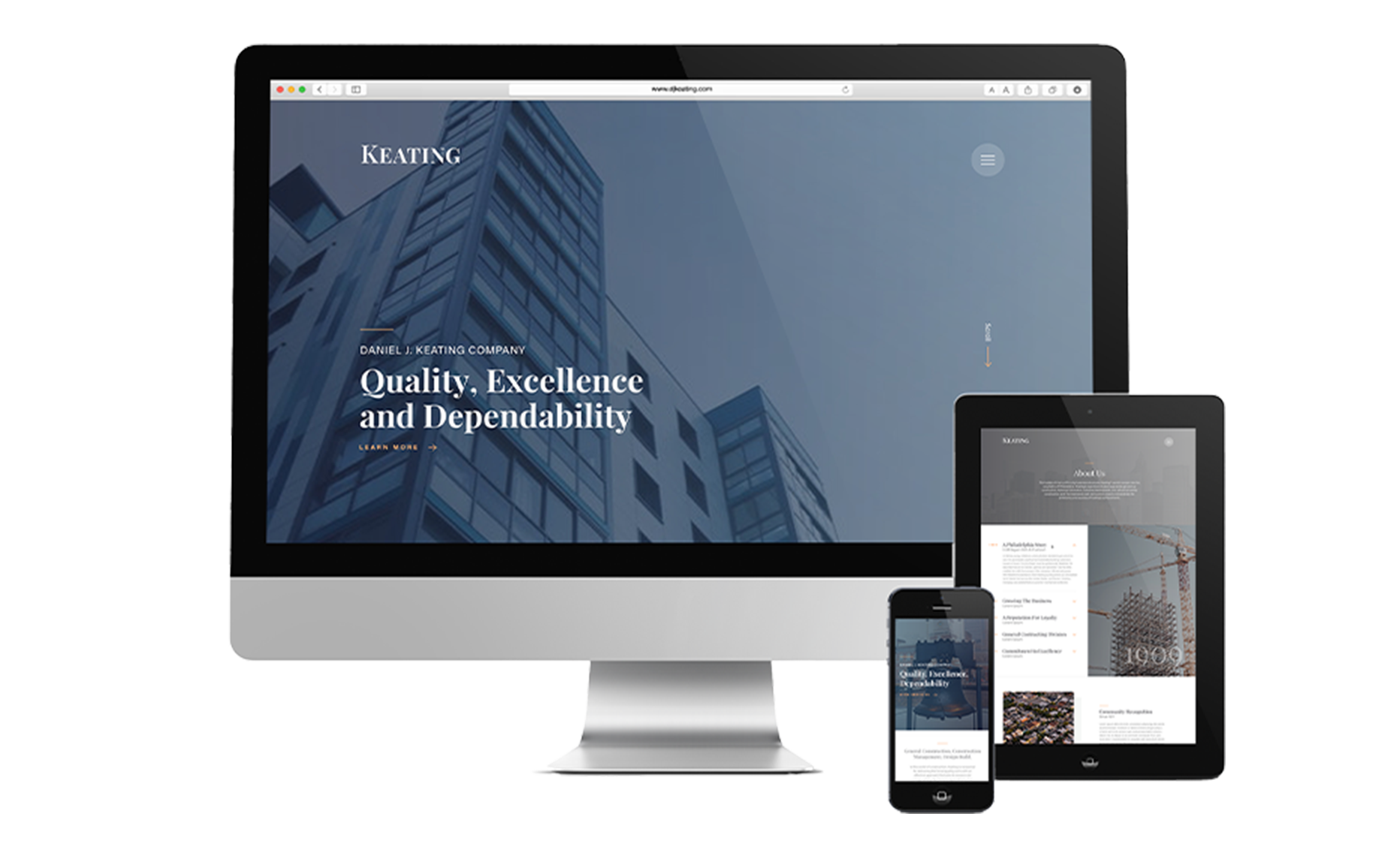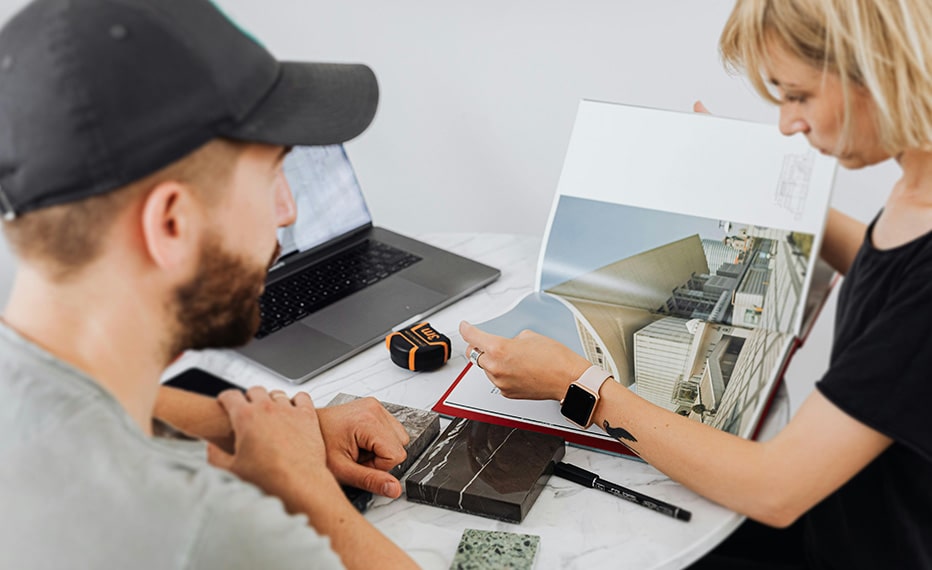Length
3 min read
Topic
Articles & Insights
No two web design projects are alike, even within the same industry. But there are many shared best practices that go a long way towards a successful website.
Over the years, we’ve worked with various architecture, construction, and engineering firms including Sargenti Architects, Daniel Keating Construction, and Remington Vernick Engineers to name a few. Not only have we seen similarities in goals, but we’ve also noticed patterns in what works… and what doesn’t.
Build Your Brand First
The first tip for effective web design isn’t related to websites at all. Designing your website before considering your brand positioning is akin to putting the cart before the horse. If your brand promise and overall messaging are unclear, then launching a new website will only serve to increase confusion, which can lead to a lack of trust and a decrease in sales – the exact opposite of what most firms want to achieve when launching a new site.
If your firm doesn’t have a clear mission and actually fulfill its brand promise to your clients, then all the latest web design tips in the world aren’t going to help you succeed. Like many industries, the architecture, construction, and engineering fields are crowded with competitors who all provide similar services. Your firm needs to stand out.
Among savvy marketers, it’s become common knowledge that a brand is much more than just a logo design. Your brand is really more about the way your audience feels about you; it’s what people say about you when you’re not in the room. To achieve real differentiation, your brand needs to be unique, authentic, and trusted. Your website is simply a vehicle to communicate your brand promise to your target audience. If you’re able to establish a solid brand identity first, designing an effective website becomes a much easier process.
How do we do it?
Before we start thinking about a visual identity or web design, we begin by leading our clients through a brand strategy phase, in which we learn about their firm, their clients, their prospects, and their competition. We accomplish this through various research tactics including stakeholder interviews, surveys, competitive audits, and more. When done, we’re able to identify opportunities within the market, solidify their mission/vision, and craft visual assets and brand messaging accordingly.
Nail Your Digital Strategy & Planning
Armed with a solid brand, you’re ready to dive into a new web design, right? Wrong. Much like designing a new building, you need to make sure the proper plans are in place to ensure a solid foundation from which to build. As with many things in life, you need to walk before you run. The temptation to launch a site as quickly and cheaply as possible will be strong, but if you can invest in a proper digital strategy first, your new site will prove to be a much more effective marketing tool over time.
How do we do it?
At Third & Arch, our digital strategy and website planning phase typically takes 4-6 weeks and consists of exercises and deliverables including surveys, interviews, goal setting, content strategy, UX strategy, testing, audits, visual brief, site architecture, interactive prototypes, and more. Combined, these activities help us paint a clear picture of the best path forward for each individual client. This strategic planning phase is the foundational bedrock of each project. Skip it at your own risk.
Good design isn’t enough. It has to be damn good.
Your interface design needs to be in line with your brand. Are you stoic and traditional? Or are you edgy and forward-thinking? When it comes to projects, do you have a specialty? Either way, a well-designed website will work hand-in-hand with your visual brand identity to form a consistent picture for your audience.
How do we do it?
It depends. Some clients engage us to build a new brand identity from the ground up. In this case, the transition to the web design phase is a natural progression. In other cases, we are crafting websites around existing brands so we need to perform a careful audit of existing materials before we can design an appropriately-branded user interface.
Design always matters, but when it comes to working with firms like yours, we’ve found that design really, really matters. If your website’s interface design is merely average, it could cost you potential clients. For our clients in design-related fields, we know we need to push the limits every time. Playing it safe isn’t going to get the job done.
Validate Your Firm
You likely develop most of your client relationships offline. So it’s important for your website to validate the feeling the client had when they met you in person. A feeling of professionalism and trust. A feeling of high quality work. Your handshake says it. Your website should say it too.
How do we do it?
We create engaging visual design and memorable messaging that captures the heart of your brand. One look at your new site and your client should know it’s “you” and be impressed with your work.
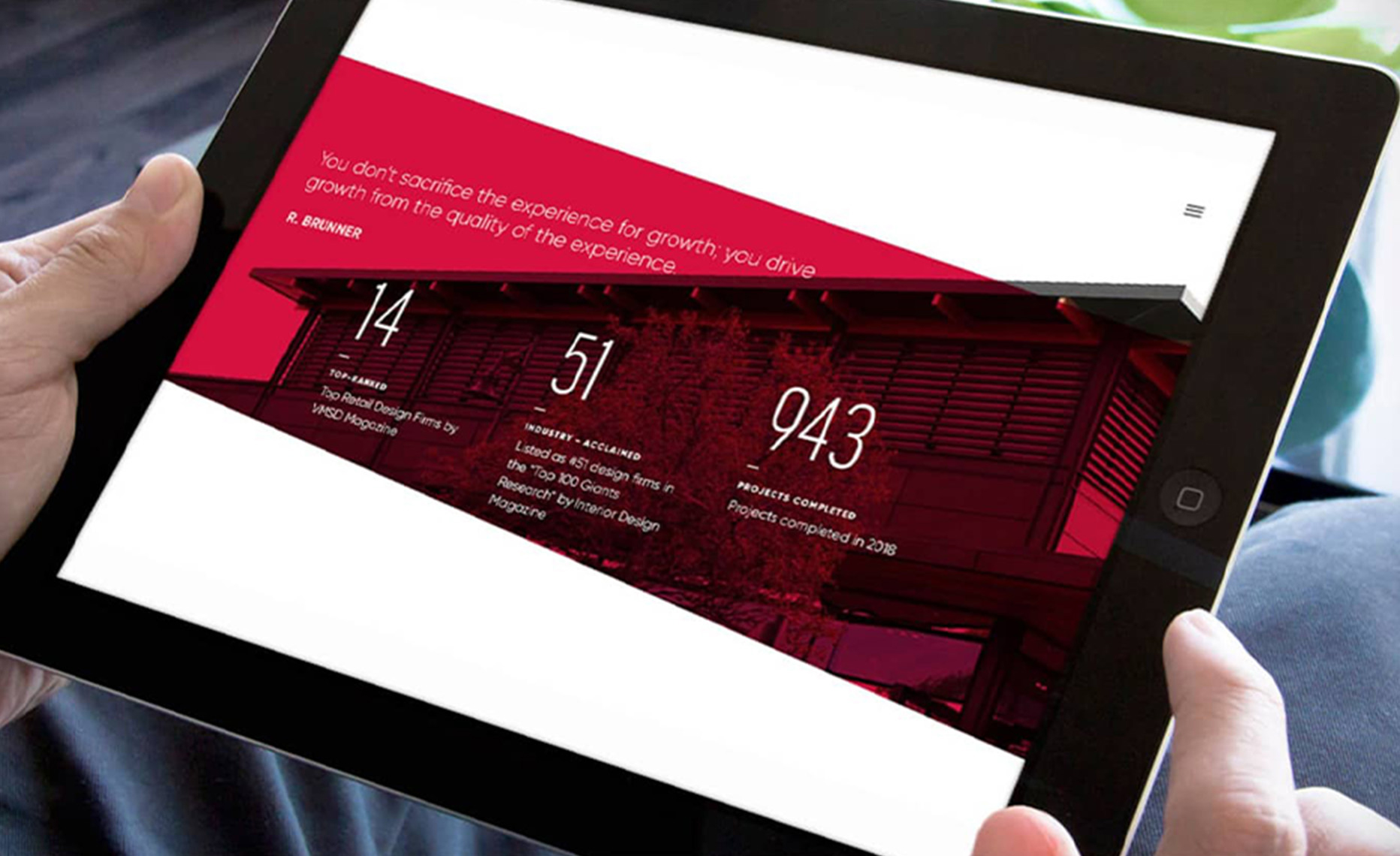
Showcase Your Projects
Architecture, construction, and engineering firms, not unlike branding agencies, are able to sell future work on the strength of their past successes. For this reason, it’s vital that your website features a well-designed portfolio section. We recommend teasing some of your best work on your homepage, with links leading to more detailed pages that are visually engaging and dive deeper into specifics of each project.
How do we do it?
Large, prominent, and vibrant imagery is key. While some people may take the time to read minute details surrounding a project, most will simply read the introductory paragraph and look at photographs of your work to determine if your firm is the right fit for their potential project.
Prospective clients also want to see results. Within each case study, we suggest drawing attention to real, measurable, tangible results that you’ve been able to achieve for your clients to date. Ideally, these results can be traced back to your clients’ original goals to illustrate how your project execution met your clients’ objectives.
We recommend featuring only your best work, as there is no reason to show older projects and risk appearing dated. Additionally, we suggest your portfolio section should be sortable, so users can filter the full list of projects by industry, service, location, etc., to find relatable case studies.
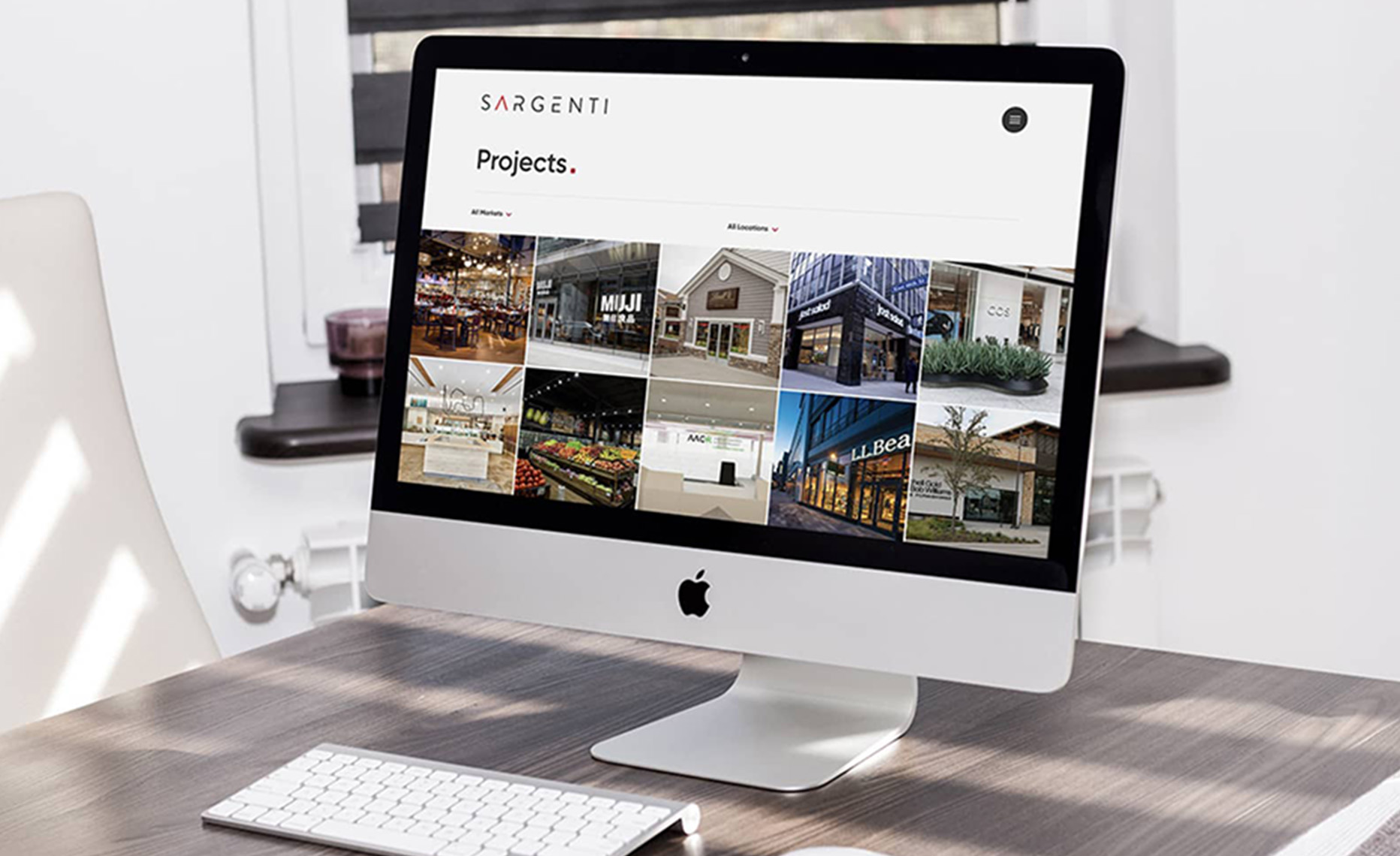
Showcase Your Client Roster
Prospective clients want to know you have the chops to do a great job on their next project. Showcasing your previous work is a great start but you may want to show off a larger list of clients as well, especially if you work with some premier clients.
How do we do it?
We typically recommend including a grid of client logos on your homepage. These logos can link to their website, or to your case study page, if you have one. To help build trust, we also recommend placing testimonials in key, relevant areas of the site. NOTE: It’s important to ask your clients for permission before featuring their projects, logos, and/or testimonials on your new site!
Ready. Set. Action!
We all know a picture is worth a thousand words, but when it comes to showcasing your work, videos are even better. Not only do videos allow you to show off the finer details of your projects, they also give you the opportunity to engage your viewers with a good story as well.
How do we do it?
There’s a wide variety of videos that work well for these types of sites, including interviews with key stakeholders, client testimonials, project time lapses, aerial drone footage, and more. Regardless of the type of video, it’s important the video itself is on-brand, matching the visual tone of the other imagery on your website. Consistency is key. With the rise of YouTube as the #2 search engine in the world, we often recommend hosting your video on your YouTube channel and then embedding it into your site. Not only does this reduce the load on your web server, the additional exposure can’t hurt either.
Showcase Your Team
As with many service-based businesses, you are selling your people and the expertise of your team, in addition to the success of previous projects. Your website should be professional, yet personable and relatable. Your online persona should align with your offline persona and at the very core, you need to communicate a sense of trust.
How do we do it?
We begin by creating unique bios with professional portraits and memorable stories. Some clients are “suits and ties” while others are “jeans and tees.” There’s no right or wrong. What matters is authenticity. Your team should be creating thoughtful, impactful content both on your site, as well as on third-party platforms. We recommend pulling this content into each authors’ bio page to showcase the expertise of your thought leaders. Likewise, we typically recommend providing links to LinkedIn profiles and/or other contact information that will allow your target audience to feel a sense of connection with your team. Lastly, you may want to consider adding links to relevant bios within each of your case studies.
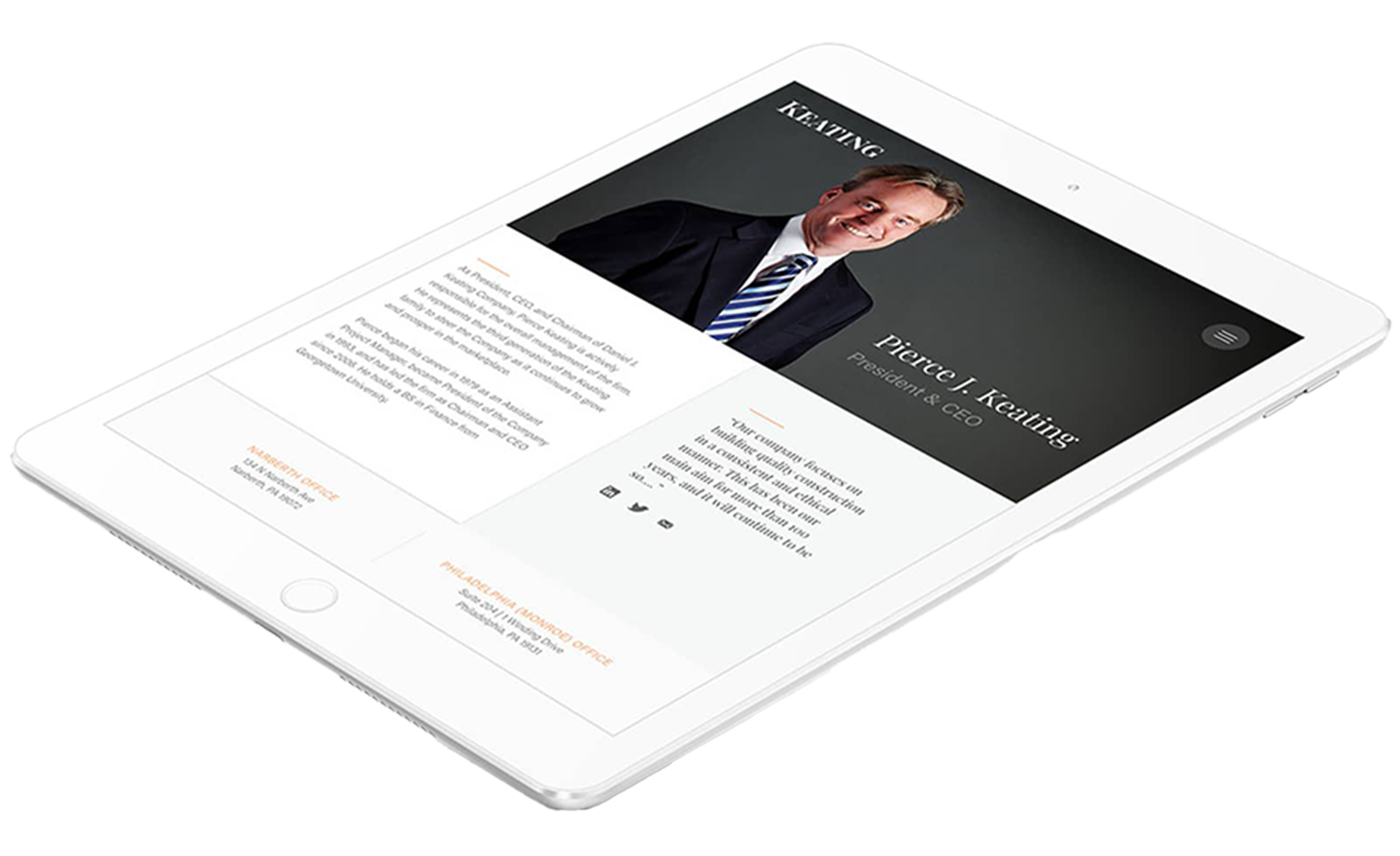
Tell Your Story
Does your firm have a lengthy history steeped in tradition? Perhaps your firm has been an industry leader for decades. If so, great! That said, the competition is nipping at your heels and now is not the time to rest on your laurels. Rather, your site should communicate your rich history, while focusing on the future. It’s important to note, however, that maintaining a dated website is NOT the same as showcasing your proud history.
How do we do it?
We are all familiar with long-winded stories and antiquated timelines. Boring. We work with our clients to understand the essence of their brand and the key events that have shaped the firm over the years. Then, we’re able to create unique animated experiences far more engaging than the timelines typically found on most websites.
Rethink Your Services
Many of our clients have expanded their services beyond what they feature on their site. They may have expanded into interior design or construction. Or perhaps they have added engineering services to complement core offerings. Representing the full breadth of what you do is important.
How do we do it?
We re-imagine website content and site architecture to better showcase the through-line between various offerings. In addition, we often help our clients re-write their website copy, allowing them to communicate otherwise “dry” information in an engaging, informative manner. After all, if your services pages are nap-inducing, then you will likely fail to communicate the intended message to your target audience.
Maintain and Cultivate Client Relationships
It’s common business knowledge that it’s easier to keep your current clients happy than it is to attract new prospects. Staying actively engaged with your current client base can help reduce churn and provide a steady bottom line from which to grow your firm. We’ve found that many of our architecture, construction, and engineering clients are very concerned about the overall experience of their current clients, yet often haven’t considered how the website strengthens those vital relationships.
How do we do it?
Put yourself in your clients’ shoes. If you’ve embarked on a huge project with a new vendor, wouldn’t it be nice to have a library of thought leadership to turn to? I’m not talking about fluffy blog posts written to boost SEO rankings. Rather, if you can provide your current clients with important, relevant information that can actually benefit them during the course of the project, then you’ve given them a reason to continue to visit your site after the sale. For example, perhaps you could provide your clients with detailed information regarding the project process, alert them of changing regulations, or provide resources for creative inspiration. You have the ability to engage and educate your clients as to your process, essentially coaching them to become happy clients that will in turn continue to hire you for future projects, or refer you to their colleagues. Win, win.
We recommend creating content that is unique and shows your expertise by providing valuable, useful information to your current client base. This content should be distributed via email, social media, your website, or perhaps all of the above.
Final Thoughts
While many best practices for web design are universal, each unique website we build requires a special set of features and functionality to serve as an effective marketing and client retention tool. It’s important to remember, however, that while your site may incorporate similar tactics as other firms, it’s vital that your web design is authentic, unique, and delivers on your firm’s brand promise.



